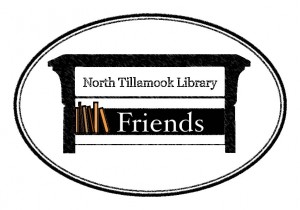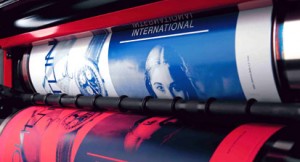The North Tillamook Library Friends
Case Study and SWOC Analysis Download the report here –> 616-swoc
Historical Context
The North Tillamook Library was established in Manzanita in the early 1930’s. A library based in a town-founder’s home, the formal library was incorporated into the Tillamook County Library system in the 1980’s and a unique partnership was formed. The library would be staffed with public employees and the shelves would also be stocked with public resources, but the building and grounds would be maintained by the Friends of the Library. The Friends were instrumental in the preservation of an architectural gem. The building itself is housed in one of several buildings designed by local architect Tom Bender. Bender is regionally known for the incorporation of energy and feng shui into his designs, a touch that is felt when entering the Library. The Friends were also responsible for designing and maintaining the quarter acre grounds which include decades old native Manzanita shrubs and other flora as well as an iconic flowering cherry which graces the entrance.
For nearly thirty years the Friends has raised money and awareness about the library and leverages funds to make public dollars go further. This progressive partnership is a shining example of what people can do when they work together to make public resources more accessible. The North Tillamook Library recently underwent a rebranding as part of the entire Tillamook Library system to develop a more cohesive look and feel to library marketing materials. The colloquial name, “Manzanita Library” was abandoned and the mouthy “North Tillamook Library” was promoted to highlight its connection to the regional system. Because of the public private partnership, the Communications Committee undertook a similar process which included the creation of a new website, updating outreach materials, and a new logo. While the look and feel of the North Tillamook Library Friends website needed consonance in comparison with the Tillamook Library Hub, the nonprofit Friends group had more flexibility in style and content than did the government page. Further, while the nonprofit could co-promote programming, there was a thick black line between the Friend’s mission to maintain the building and grounds, and the Library systems programming responsibilities. As a result, the website focuses on maintaining a calendar, providing location information, and book reviews, and also serves as the quarterly newsletter.
Demographic Trends
The City of Manzanita where the Library is located is home to a few hundred full-time people but swells to several thousand during the peak summer season. These nonresident guests use the library frequently for anything from Saturday Storytime for Kids or internet access. Monthly visitor counts range from 2,000-4,000 depending on the month. The City itself is limited in size because of the flood prone agricultural fields to the east, the mountains to the north, the river to the south, and the Pacific Ocean to the west. To further complicate development, most of the town is built either in the tsunami inundation zone or on sand-dunes.
While Manzanita is a desirable place to live, there are few family wage jobs, the public schools are sub-standard, and diversity is low. The town is made up of 95% wealthy, white-identified adults with an average age of over 50. The town is seen by many as a resort destination and retirement community. The North Tillamook Library by contrast serves the villages of Nehalem and Wheeler which are to the south of Manzanita and more diverse in general, both in demographics and culture. This was part of the purpose of rebranding the Library; to better serve the diverse communities. Tillamook County, in general, is not growing. While growth is projected into 2040, these estimates have long been hopeful. The regional economy is dependent on natural resources and these jobs are few and far between. The County is home to roughly 25,000 full-time residents and growth projections are modest with the region estimated to grow by 15,000 in the next 25 years.
Economic Trends
While the primary industries of Tillamook County are forestry, farming, and fishing, revenues are down in these sectors. The next largest local economy is the construction trade. When the housing bubble burst in 2007, the regional construction industry largely ceased. Manzanita was one of the many coastal towns that suffered. Not only were new homes not being built, but home values plummeted, in some cases by 50%. Because County supports the library programs, there were many vocal opponents to the construction of the new main branch library and the cost of these programs. But voters repeatedly passed a library bond to construct the new building and expand library resources. The economic recession impacted this heavily. While the bond had been passed with a strong majority, the bond was based on property tax revenues. When the housing market collapsed a great deal of tax revenue was also lost. Additionally, the burden to fund the library disproportionately fell on low-income land owners whose property value didn’t change drastically because of the age of the homes (as opposed to second home owners whose new home values were decreased significantly). This has resulted in discord between the two types of Tillamook County residents; those that see the library as an invaluable public resource and those that see the library system as a drain on public dollars.
Cultural Trends
Tillamook County is home to several distinct cultures. There are the long-time ‘natives’ who live in Tillamook City, on area farms, and on family spreads along the scenic rivers. There are transplants which can include anyone not born within the County, and to ‘natives’ this can include first generation children. There are farm workers which tend to be Hispanic. There are tourists, largely from Portland and Seattle, although people travel from around the world to visit coastal Oregon. There are service workers who sometimes stay on to become transplants but generally leave when the summer work is gone. There is a vibrant arts community in Tillamook County, and especially so in Manzanita.
Manzanita has changed significantly in the last 20 years. The town was never more than a single strip with a bar, a store, and some basic services. Recent development includes the destruction of a historical cabin on main street to make way for a real estate office, restaurant, and apartments. One of the last remaining old growth Sitka spruce trees on the main street was cut down to make way for a winery. New stores and restaurants are showing up annually. Many long-time residents are priced out and service workers can no longer afford to live in town, they instead commute from cheaper cities like Wheeler or Bay City.
Products: Access and Place
The NTLF products are tangible in that the library likely wouldn’t exist without the private, community support paying for the maintenance of the building. Other branches in the Tillamook County system are housed in dilapidated public buildings and are very small by comparison. The tech center, which is open to all, not only provides the community with free internet and computer access, but also courses on computer literacy. The NTLF also provides a de facto public park with a couple of benches in a lovely garden. The placement of the library is ideal; the library is located along the main commercial strip of Manzanita. There is ample parking and the site is very visible from the street with a new lighted sign. There are however key differences in the products the library provides and the products the friends provide. The key product of the Friends group is the building and grounds maintenance. The recent remodel was paid for by a generous donation to the NTLF. The NTLF meet regularly at the library, however Board meetings aren’t advertised well or widely and committee meetings, where the majority of the work takes place, rotate locations based on who is chairing the committee and the times of the committee meetings aren’t consistent. The organization too has an invitation only feel and the general public is not aware of the NTLF.
Promotional Efforts
While the NTLF is not responsible for the library programming, the communications committee and related newsletter and blog are largely dedicated to promoting library events. Promotional efforts are largely limited to newsletter announcements, blog posts, social media posts, and fliers. The communications committee receives basic information about the event and assigns a committee volunteer the task of making the flier. The Committee chair is responsible for compiling newsletter stories from other NTLF volunteers into the blog and also manages the sites social media feed.
Strengths
The organization has a varied annual budget ranging from lows of $20,000 to highs of $60,000. There are no staff members in the all-volunteer friends group but maintenance of the aging building is expensive as is grounds maintenance. There are minimal costs associated with fundraising and outreach limited to less than $1000 annually. Revenues are generated from donations from friends and membership fees as well as the book sale and large bequests. Most of the Friends resources are kept in a trust designed to moderately generate revenue over a long period of time. The Friends have a dedicated group of volunteers that love the library and work tirelessly to ensure that the building survive in perpetuity.
Weaknesses
The Friends are solvent financially but recent repairs and renovations such as a new roof and siding have used up a great deal of their annual budget. Since the majority of their funds (with the exception of a large bequest that was not planned) are from membership fees and small donations from an aging community, it is essential that the NTLF reach out to a younger generation so that a new community of volunteers is ready to take the reign’s when Board members retire.
Opportunities
The library is a key resource for the town of Manzanita. Although the town itself is incorporated and separate from the County for all intents and purposes, the library is a tourist attraction for the City which certainly benefits from its presence. The County and NTLF should consider a partnership with the City of Manzanita to offset some of the maintenance costs.
Challenges
The Friends are solvent financially but recent repairs and renovations such as a new roof and siding have used up a great deal of their annual budget. With the cost of maintenance only increasing and the membership revenues fairly flat, the NTLF will need to consider an alternative source of revenues such as grants. The Development Committee does write grants but this is not a large revenue source.



